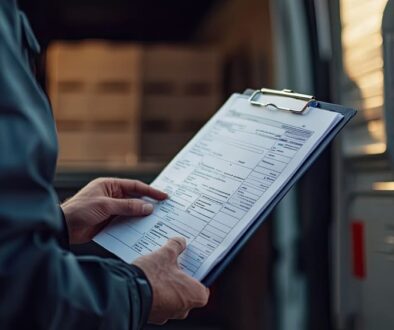Types of Merchandise Transport: Complete Guide to Choose the Most Suitable
1. Introduction: Why is it crucial to understand the types of freight transport?
In the world of logistics, understanding the different types of freight transport is as important as having a good product. Why? Because choosing the right mode of transport directly impacts cost, delivery time, shipment security, and even customer satisfaction.
Transport is not just the means to move products from point A to point B; it’s a strategic part of the supply chain. Companies that master this area not only reduce costs but also improve operational efficiency and strengthen their competitive positioning.
With the rise of e-commerce, globalization, and growing consumer demands, having a well-defined logistics strategy has become essential. And it all starts with the basics: understanding the available types of freight transport and knowing when and why to use each one.
In this article, we’ll break down each type of transport, its features, advantages, disadvantages, and the key criteria to decide which one is best depending on the type of goods, distance, or expected delivery time.
2. General Classification of Freight Transport Types
When we talk about freight transport, the most common classification is by mode of transport. This gives rise to the following categories:
Road transport
Maritime transport
Air transport
Rail transport
Multimodal transport (a combination of the above)
Each of these modes has specific characteristics that make them more or less suitable depending on the logistics context: cargo volume, product type, final destination, urgency, budget, and other factors.
Additionally, within each mode, there are subcategories and specifications: a refrigerated truck is not the same as a curtain-sided one, or a container ship as a bulk carrier. The choice depends on many variables that we’ll analyze in detail.
This classification not only helps understand the big picture but also aids in defining efficient logistics strategies, optimizing routes, and complying with legal and commercial requirements.
3. Road Transport: Types, Advantages, and When to Use It
Road transport is the most commonly used at national and regional levels. It mainly includes two subtypes: road and rail transport, although the latter will be covered in detail later.
Road transport is carried out using trucks, vans, trailers, or even special vehicles like tankers or refrigerated trucks. Its main advantage is flexibility: it can reach almost any destination without needing complex infrastructure like ports or airports.
Advantages:
Ideal for short or medium distances
Door-to-door access (last mile)
Moderate initial costs compared to other modes
Greater adaptability for perishable or fragile products
Disadvantages:
Slower for long distances
Subject to traffic, tolls, and weather conditions
Weight and volume restrictions can be limiting
This type of transport is ideal for local supply chains, retail, urban distribution, or fast deliveries. It’s also key in e-commerce logistics.
4. Maritime Transport: Ideal for Large International Volumes
When it comes to international trade, maritime transport is king. It’s estimated that around 90% of global trade is carried out by sea. This is due to its massive cargo capacity and relatively low cost per transported unit.
It’s ideal for heavy, bulky, or non-perishable goods like raw materials, machinery, or full containers of non-urgent products.
Advantages:
High load capacity (ideal for containers, bulk goods, or vehicles)
Economical cost for large volumes
Global connectivity via established sea routes
Disadvantages:
Long transit times (can take weeks)
Requires specific port infrastructure
Possible delays due to weather or port congestion
Although slower than other modes, maritime transport is essential for global logistics. Its efficiency increases when combined with other modes in multimodal operations.
5. Air Transport: Speed and Efficiency for Urgent Shipments
If time is critical, air transport is the option to consider. While it’s the most expensive mode, it’s also the fastest, making it ideal for high-value, urgent, or perishable products.
It plays a key role in industries like technology, pharmaceuticals, fashion, and specialty food. It’s also ideal for transporting spare parts or seasonal products that require immediate delivery.
Advantages:
Very short transit times (even on intercontinental routes)
High security
Perfect for low-volume, high-value goods
Disadvantages:
High costs per kilogram transported
Volume and weight limitations
Requires specialized airport infrastructure
Air transport offers a premium solution when speed makes the difference. It can also be part of a fast-replenishment or reverse logistics strategy.
6. Rail Transport: Efficient for Long Overland Distances
Rail transport is an intermediate option between road and maritime. It’s more economical than trucks for long distances and faster than sea transport. Although it doesn’t offer the same coverage as roads, in well-developed routes (such as in Europe or Asia), it is highly efficient.
It’s commonly used to transport raw materials, automobiles, industrial goods, or full containers.
Advantages:
Cost-efficient on long routes
High load capacity
More environmentally sustainable
Disadvantages:
Less geographical flexibility (requires railway network)
Often requires transshipment at origin or final destination
Rail transport is especially effective in B2B operations and transnational logistics corridors like the famous “Silk Train” between China and Europe.
7. Multimodal Transport: The Combination That Optimizes Logistics
Multimodal transport combines two or more modes of transport in a single shipment, under a single contract and logistics responsibility. It’s the most modern way to manage international or complex operations.
For example, goods may leave a factory by truck, be shipped by sea, and then reach their final destination by train.
Advantages:
Optimization of time, cost, and routes
Reduced risk and paperwork (a single logistics contract)
Greater geographic coverage and efficiency
Disadvantages:
More complex coordination
Dependence on intermodal infrastructure (dry ports, logistics hubs, etc.)
May involve transfers and additional handling of the goods
This type of transport is increasingly common in global supply chains, thanks to its versatility and adaptability to market needs.
8. Factors for Choosing the Best Type of Transport Based on the Goods
There is no universally “best” option; it all depends on the shipment’s characteristics. When choosing the most suitable transport mode, consider:
Type of goods: perishable, hazardous, fragile, valuable
Volume and weight: some modes have significant limitations
Destination: local, national, international
Urgency: delivery time affects the choice
Cost: budget available for transport
Contract conditions: Incoterms, insurance, regulations
Logistics experts always recommend a comprehensive analysis that considers not just the price per km, but also total efficiency, safety, and traceability of the shipment.
9. Trends and the Future of Freight Transport
The transport sector is undergoing major transformation. Key trends shaping the future include:
Digitization: real-time tracking, big data, artificial intelligence
Sustainability: use of biofuels, electrification, green transport
Automation: autonomous vehicles, drones, robotized hubs
Smart intermodality: seamless integration of all modes via digital platforms
Companies that quickly adapt to these trends will not only gain competitiveness but also comply with new legal and consumer demands, which are increasingly environmentally conscious.
10. Conclusion: Optimizing Transport Is Key to Logistics Competitiveness
Understanding the different types of freight transport is not just theory—it’s a strategic tool for any business that needs to move products. Choosing wisely can mean the difference between an on-time delivery and a lost customer, between profitability and extra costs.
No matter the mode, the important thing is to align the choice with business objectives, customer needs, and product characteristics. In a world where logistics is increasingly complex, mastering this knowledge is a real competitive advantage.





